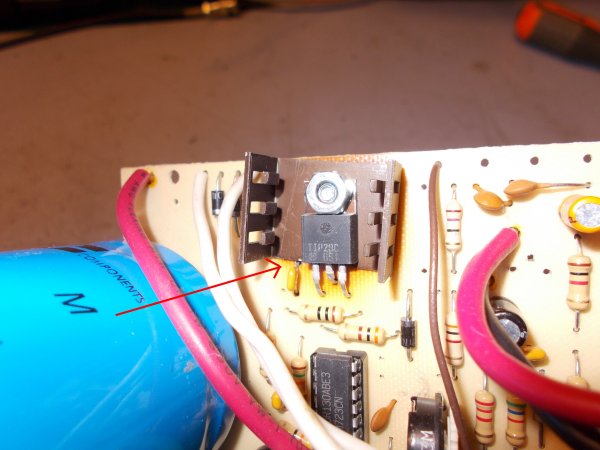
Introduction
The Author has been building power supplies in the 12v (nominal range) for decades. For this project it was decided to try some of the commercially made ones. The Astron line has been around for decades as well. A 50-amp (peak rated) one was available for this project.
It has been found several products on the market have a tendacy to over rate their product. The classic example, is antenna gain figures (antenna evals are found elsewhere on this site). Load tests were performed on this supply at 12 amp, 18 amp and 22 amp @ 13.8 v, (a normal nominal 12v rating of equipment in the old LMR industry). For the 22-amp load the (2N3771) output transistors got hot within a few minutes while the heat sink appeared to "keep up" with the head dissipation. The next test was at 12 amps, which the transistors did not get so hot. Because of the IR losses this was expected with any power supply. Having said this It's believed the 50-amp rating is peak and suspect their continuous duty rating is more in the 35-amp area. To be comfortable (repeater service) this supply should be rated around 12 amps continuous (about 1/4 of the OEM peak rating) without any fans and perhaps more, with.
Under the load test the supply's panel meters are visible. The other images show the load device and what's inside the supply.
The internal wiring appears to be a little messy however, makes it simpler for maintenance. For example, you don't need to fish through a bundle of wires to find something.
The schematic drawing for a similar model (RS-35A) is available too.
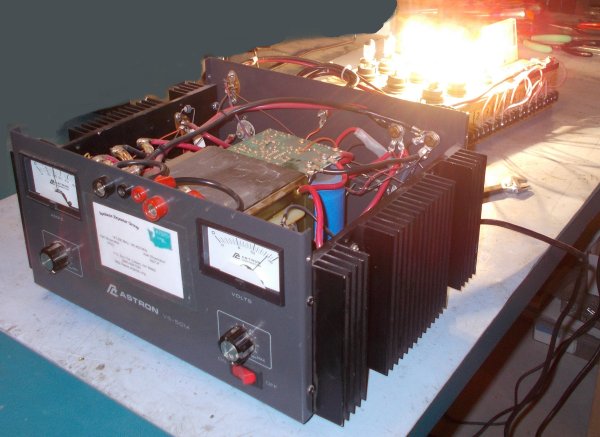
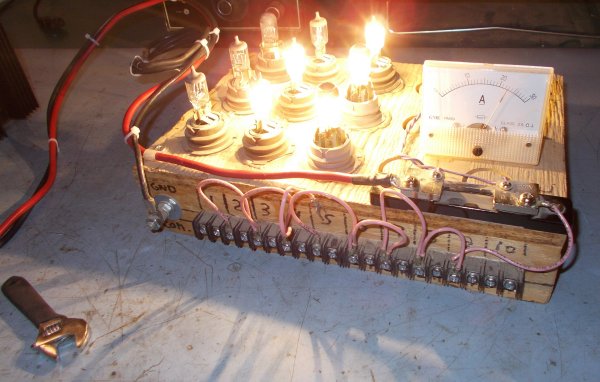
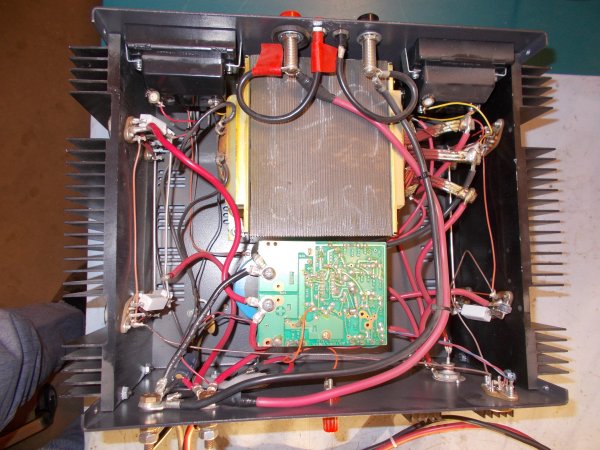
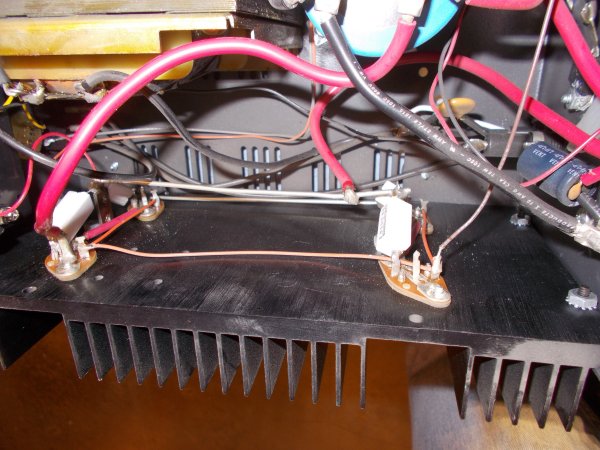
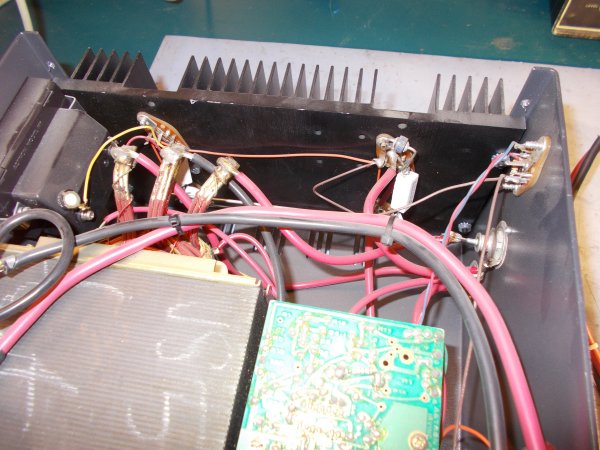
Tip: Install a ground pin jack on the chassis. For the RM-35A there's a hole in the back (for battery input-not being used) for a simple install. Run a ground wire to that. When making some measurement with your DVM you can plug in the ground lead to this point to free up a hand.
One last item; I replaced those black screws with "normal" finish #6 x 3/8 with the truss type head. I have a problem with everything black and these new ones are good for finding in low-light conditions. There's something about modern equipment that those manufacturers are all hung up on black. I don't get it. It's like trying to find something under the dash board in your car with everything black. Yuk! Otherwise, this is a good supply.
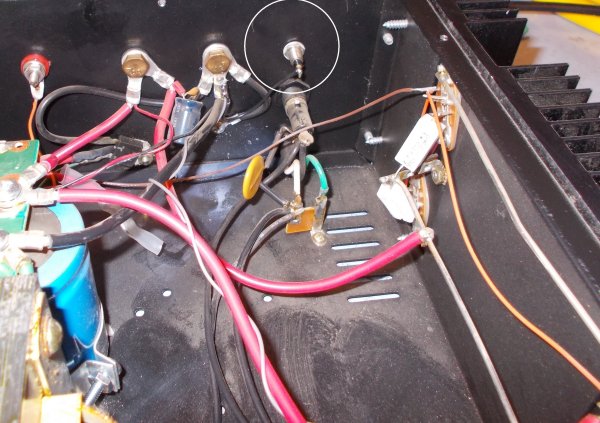
Here's a word on the pass transistors. Originally, lower power supplies used the 2N3055, then upgraded to the 2N3771. If you need to order replacements do so from a reputable source and not ebay. The latter may give you mixed results especially since a lot of them come from China in a low quality build. This is because many of the Chinese companies try to get by with the minimum quality effort. If you have to use ebay, try getting one sample, test it and take it apart for inspection. There's also clips on youtube about this. Here's what the inside of a Astron (OEM) transistor which is probably designed-specked better.
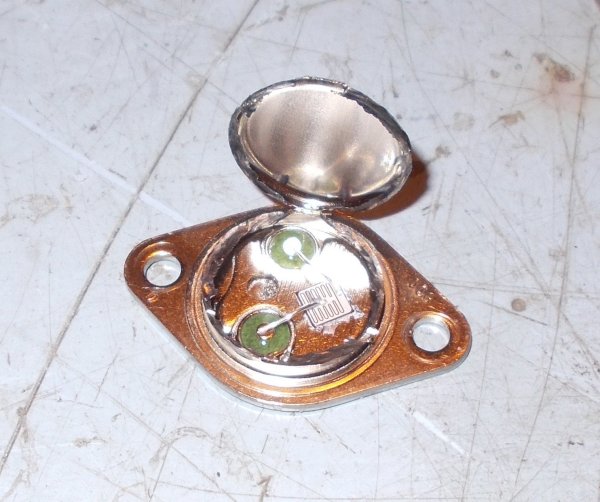
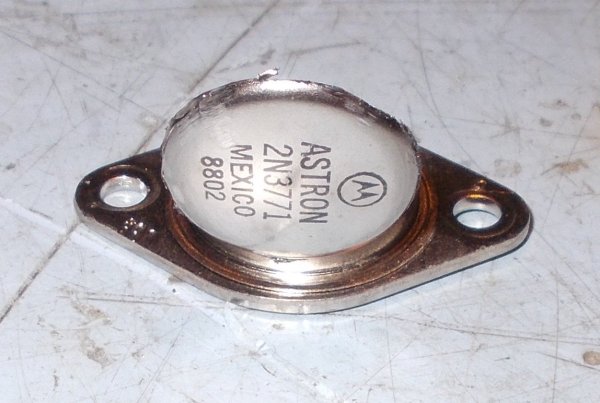
For the RS-20A supply uses similar circuitry. The main difference is the AC transformer size and the number of pass transistors for the output. As most products are over rated this supply is good for about 4 amps continuous without forced air. Higher draws require fan(s) to keep the heat sink cool enough. The chassis screws are "wimpy" (china steel?). As shown one failed from too much torque by hand.
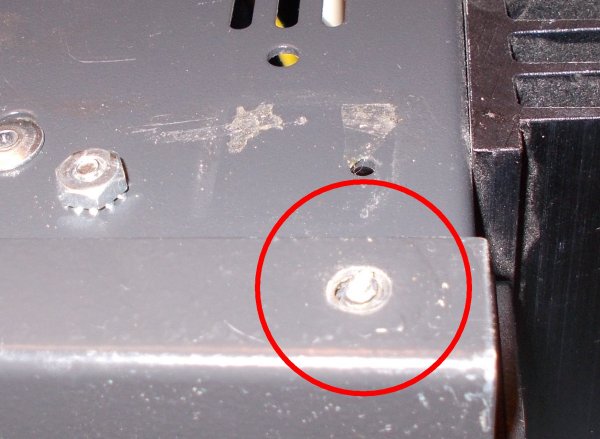
Another problem area is the disk cap's one lead extremely close to the heat sink. The Author's "fix" was to tilt the sink slightly to the left as viewed on the component side of the PCB.

The recent units have that ridiculous solder-in tab type capacitor for C5. It's a real pain to replace them. The Author choose to revert back to the old type with screw terminals on the top. A bracket was needed, so three holes and some hardware later improved the serviceability.
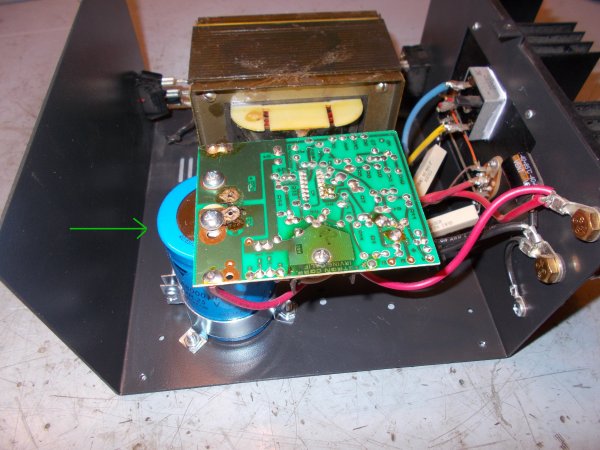
To signal the FCU a 120° F thermo switch is installed on the heat sink.
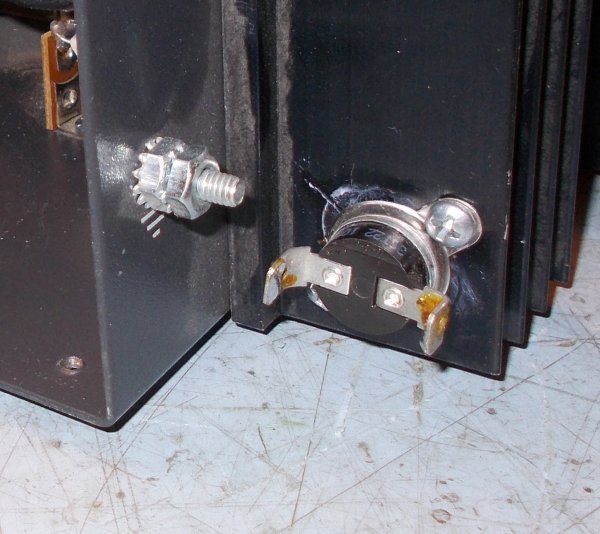
The AC line fuse is that little "BMX" type as show a couple of them (supply only needs one). Even though the IEA jack and plug is nice finding a replacement fuse can be a pain. Future purchases of this supply will be of the old type that uses the conventional AGC type fuse.
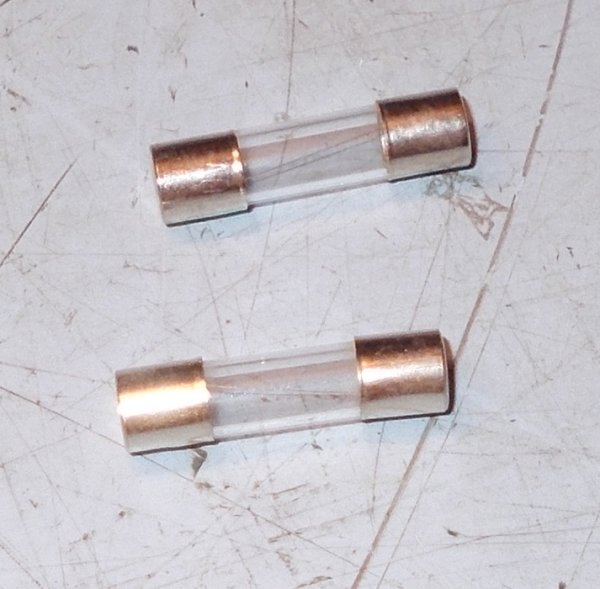
Jeff Banke has been working on these units for a couple years now. He has found some interesting subjects that you can view
here .
This may be copied in complete form only for non-profit purposes, such as for the knowledge for the Amateur Radio Service, with the Author credited as designer. For other arrangements please contact the Author.
![[SRG home Direction]](images/srghome.gif)